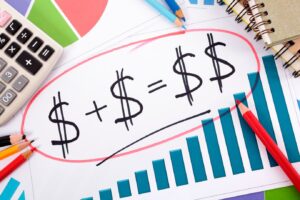We still believe in our strategy to invest for dividends and measure success by the amount of dividends received each year. And then making sure that this income stream can be maintained and grow.
Today I want to discuss a few strategies that we have employed over the years to get to our retirement goal and beyond. There are so many ways to invest and I don’t want to say that one is better than another. The key is to have a plan and stick to it.
Reasons for Investing
Before starting on this journey, we need to know why and for what we’re investing. If you have a great DB Pension from your employer, you probably aren’t investing for retirement. There can be many other reasons. Kids’ education, travel, house, cars, charity, whatever. If you clearly define your reasons and have an end goal in mind you can succeed.
Have a Plan
To be a successful investor you must have a plan. How are you going to invest? Are you going to try to time the sectors when they start coming into favor? Or go after the latest tech stocks that show potential? Or be more conservative and stick to ETF’s? Dividend paying stocks? Or perhaps a combination? There are so many approaches you can take. But you should write out a plan for your investment approach. Then, when wanting to buy or sell something, refer to the plan and see if this is within the parameters you set.
Our plan is to find dividend paying companies that have solid growing businesses and can sustain these dividends even when markets go down. Then hold them for a long time. We want to be diversified enough to smooth out volatile times but not necessarily take part in sectors that are too unpredictable. We make exceptions in our RESP, and have one holding outside of that which doesn’t pay a dividend. (BRK.B) And we don’t want to pay fees to manage this.
Education & Avoiding Fees
Another key to successful investing is avoiding fees. The best thing for your finances is to educate yourself on the various options and do the investing yourself. When investing in mutual funds your returns are less than half of market returns. In the October 2019 issue of Canadian Money Saver magazine, (this is one every DIY investor should subscribe to) was an article by Michelle Hung titled “Turn Your Money-Sucking Mutual Fund Portfolio Into A Winning ETF Portfolio”. In it she says that on a $250M portfolio, $285M can be lost to fees over a 20-year period. Yet so many are willing to hand these fees over to the institutions.
Discipline
Stick to your plan. This is hard to do when markets are fluctuating. There are so many studies that show that you need to stay invested. Peter Hodson wrote an article for the Financial Post on January 11th 2020 about “Five things to remember when you want to beat the market jitters”. He refers to a JP Morgan Asset Management Retirement Guide that says that over a 20-year period from 1999 – 2018, if you missed only the top 10 best days in the stock market, your return was cut in half. If you missed the best 20 days during this period, your annualized performance goes below zero. That certainly is an eye opener. When people talk about lost decades in their investment returns here is why. This became very clear for me in 2008 when our portfolio dropped by 24%. But we hung in there and didn’t panic. Then by the end of 2009 it had fully recovered. And since then we have almost quadrupled it.
Time in the market, not market timing, is what gets it done. But this takes discipline.
Leverage
This is certainly not for everyone. But I have always looked for safe ways to maximize the outcomes for my plan. When we started investing and had a mortgage, we were looking for ways to simplify things. My reason for investing was always to create income for retirement. So how to balance that with paying down debt? I knew I wanted to do both and not wait until the debt was paid off. So, we borrowed some more money to start investing. We kept it separate from our mortgage so we could make the interest tax deductible. Then after looking at all the options I found that a Homeowner Line of Credit lets you pay interest only, or pay off as much as you want without penalties. This was our answer. We converted all debt to the LOC and paid as much back each month as we could. As our debt decreased, I kept borrowing again to invest more as the dividends we received were higher than the interest on the loan. Positive cashflow, this works. After 4 house moves, we had enough to pay off the house loan and concentrate on investing. We never had an emergency, travel, or car fund, just investments and a manageable loan. When something comes up that requires money, we dip into the LOC, like buying a car. Then each month whatever money is available gets paid back. We kept the LOC at a certain level that we were comfortable with for investing and only paid it off when I retired.
For people that are in their early stages of building a portfolio this may not apply. But when I read about how people save $500 a month to have money for next year’s TFSA contribution, why not borrow the $6,000 and invest it now? Then pay off the loan during the year and next year do it again. This gives your investments a little boost because you’re in the market for a year longer. But it requires discipline. Debt can be used to your advantage if managed wisely. See my post on building a TFSA here.
But that is just my different view. Would love to see your comments on this.



